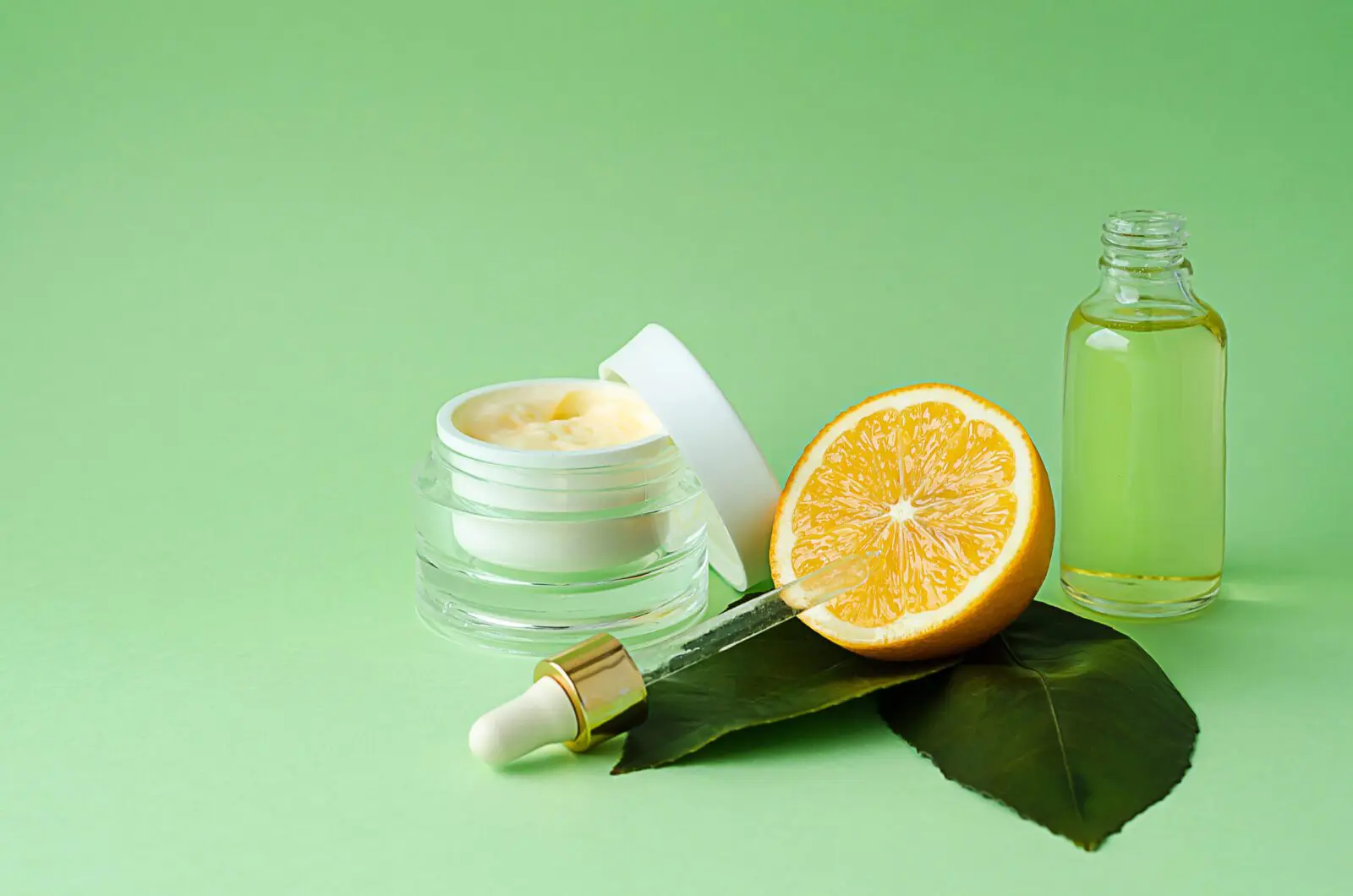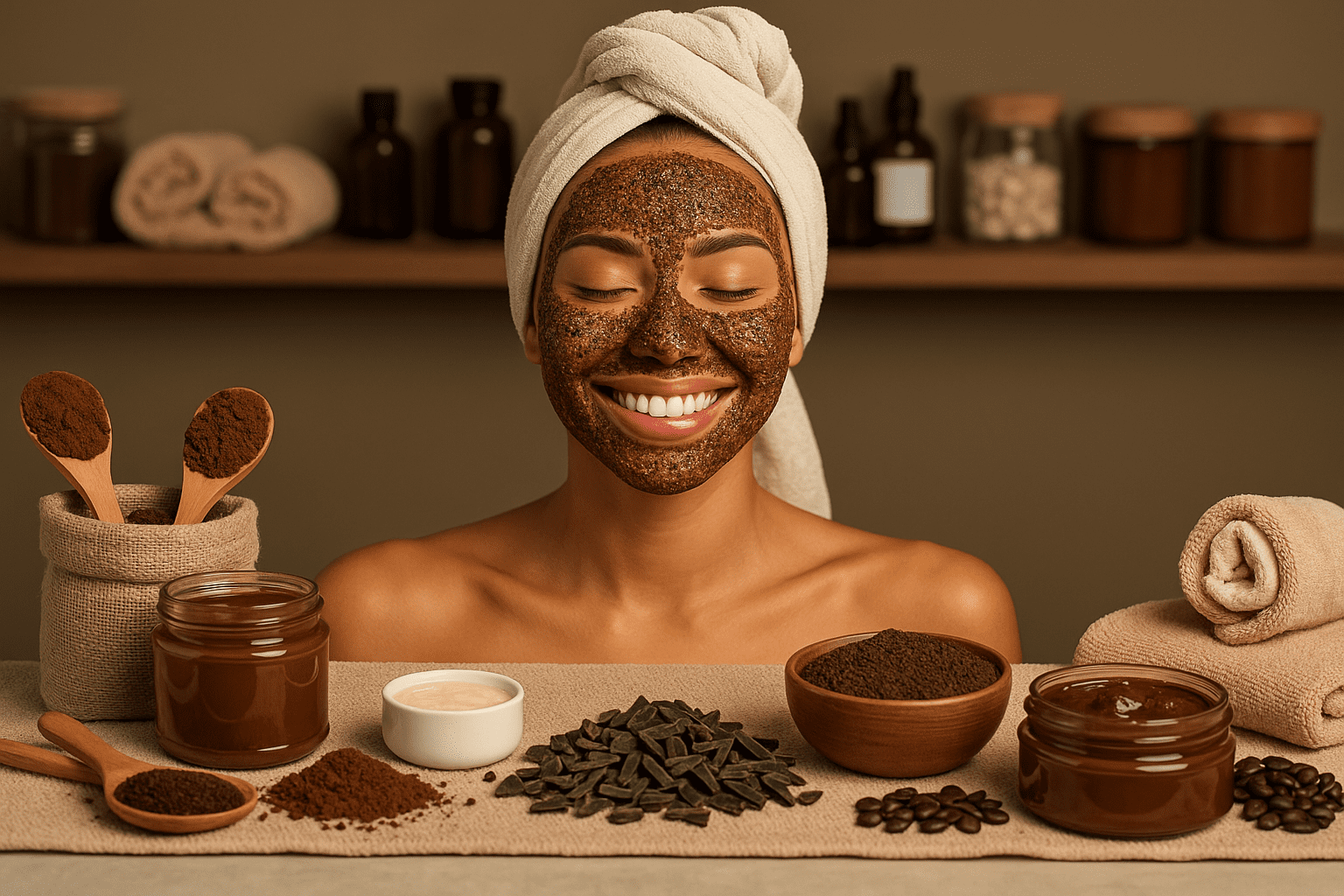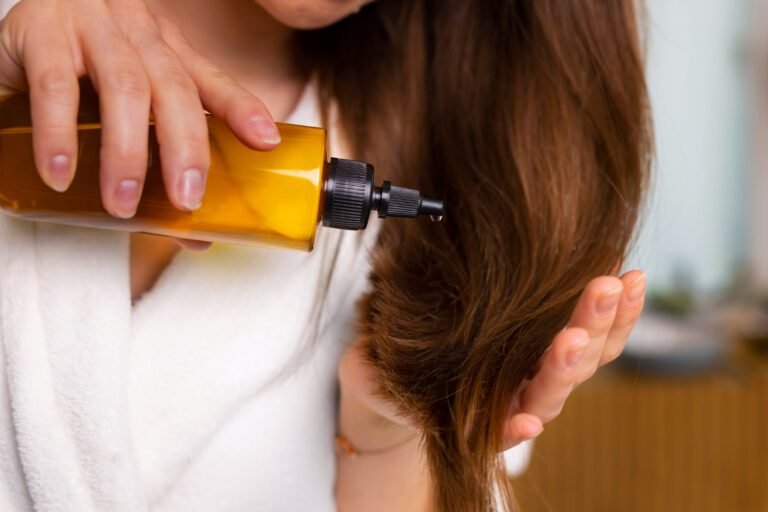Vitamin C remains one of the most researched and desired cosmetic actives. However, its formulation challenges—instability, oxidation, and pH sensitivity—have driven a new wave of technical innovation. In 2025, the market evolves toward clean, stabilized, and biopolymer-enhanced delivery systems that keep L-ascorbic acid potent while broadening accessibility through advanced derivatives.
How Vitamin C Works in Skin Physiology
Vitamin C (L-ascorbic acid) is a water-soluble antioxidant that serves multiple biological roles. Firstly, it supports collagen synthesis by acting as a cofactor for prolyl and lysyl hydroxylases—enzymes essential for stable triple-helix formation. Secondly, it neutralizes reactive oxygen species (ROS) generated by UV radiation and pollution. Finally, it inhibits tyrosinase, reducing melanin production and promoting bright, even skin tone.
Clinical data consistently demonstrates measurable benefits: Lin et al., Duke University (2005) found that a formulation containing 15 % L-ascorbic acid, 1 % α-tocopherol, and 0.5 % ferulic acid increased photoprotection eightfold compared to untreated skin. Therefore, the combination of vitamin C with complementary antioxidants remains the benchmark for visible improvement.
The Stability Challenge
Despite its efficacy, L-ascorbic acid (L-AA) is notoriously unstable in water and oxygen. When exposed to air, light, or high temperature, it oxidizes to dehydroascorbic acid—losing potency and turning formulations yellow or brown. As a result, the challenge for chemists is to preserve active concentration without relying on synthetic stabilizers that conflict with clean-label goals.
Several stabilization strategies have proven effective:
- Low pH systems (2.5–3.5): Reduce oxidation rate and improve dermal penetration.
- Antioxidant co-factors: Vitamin E and ferulic acid regenerate oxidized L-AA and stabilize radicals.
- Oxygen-free packaging: Airless pumps or nitrogen-flushed vials prevent degradation.
- Anhydrous formulations: Water-free bases using polyols, squalane, or DMI extend shelf life to over 24 months.
- Encapsulation systems: Polymer matrices and liposomal carriers isolate L-AA from environmental stressors.
Comparing Vitamin C Derivatives
To overcome instability, modern formulations often use ascorbic acid derivatives that resist oxidation and offer improved solubility. However, not all derivatives convert efficiently to active L-ascorbic acid in skin. Therefore, chemists must weigh stability against bioavailability and target performance.
| Derivative | Solubility | Stability | Bioavailability | Ideal pH | Key Notes |
|---|---|---|---|---|---|
| L-Ascorbic Acid (AA) | Water-soluble | Low | High (direct active) | 2.5–3.5 | Most potent, unstable, requires low pH and oxygen control |
| 3-O-Ethyl Ascorbic Acid (EA) | Water & oil-soluble | Very High | Moderate (enzymatic conversion) | 4 – 7 | 10 % EA clinically brightens skin and reduces spots; compatible with peptides & niacinamide. Available as Grand Ingredients 3-O-Ethyl Ascorbic Acid. |
| Tetrahexyldecyl Ascorbate (THD) | Oil-soluble | High | Moderate | 5–7 | Ideal for sensitive or lipid-rich formulations; good penetration through stratum corneum |
| Magnesium Ascorbyl Phosphate (MAP) | Water-soluble | Moderate | Low | 6–7 | Gentle, lower efficacy; good for leave-on creams |
| Ascorbyl Glucoside (AA-2G) | Water-soluble | High | Low | 5–7 | Stable in emulsions; releases vitamin C slowly via enzymatic hydrolysis |
In summary, 3-O-ethyl ascorbic acid currently leads derivative development due to high stability, water–oil versatility, and proven clinical data. Meanwhile, THD ascorbate dominates lipid-phase systems for sensitive or mature skin applications.
Formulation Design: Balancing pH, Solvent, and Delivery
Successful vitamin C formulation depends on three variables: pH control, solvent selection, and delivery architecture. Firstly, maintaining pH between 2.5–3.5 ensures penetration for L-AA while avoiding irritation. Secondly, solvent systems such as ethanol, propylene glycol, or squalane adjust solubility and evaporation rate. Finally, integrating polymers or encapsulating agents prevents oxidation and controls release.
N-Vitamin C exemplifies this principle by embedding L-ascorbic acid in a plant-based polymer matrix that shields the molecule from oxygen and UV exposure. When paired with 3-O-Ethyl Ascorbic Acid, formulators can build dual-phase systems combining instant brightness and long-term antioxidant stability.
Combinations and Synergy
Vitamin C performs best when used in synergy with complementary antioxidants and barrier enhancers. For example, the classical combination of vitamin C + vitamin E + ferulic acid remains the gold standard for daytime photoprotection. Additionally, pairing with adaptive hydration polymers supports balanced water retention, preventing dryness often associated with acidic serums.
Niacinamide compatibility—once controversial—is now fully supported by modern research. Indeed, both actives perform synergistically to reduce hyperpigmentation and strengthen the skin barrier when applied within physiological pH ranges (≤6). Therefore, combination formulas or alternating routines (Vitamin C AM, Niacinamide PM) deliver optimal results.
Clean-Label and Regulatory Compliance
Because natural and bio-derived derivatives like 3-O-ethyl and AA-2G are biodegradable and free of microplastics, they comply with the EU Microplastics Regulation (2023/2055) and U.S. MoCRA requirements. Consequently, formulators can maintain efficacy without synthetic stabilizers or PEG-based carriers.
Grand Ingredients Case Study: Stabilizing Vitamin C Naturally
Within its antioxidant portfolio, Grand Ingredients integrates two complementary Vitamin C technologies: N-Vitamin C, an encapsulated plant-based form protected in a biopolymer network, and 3-O-Ethyl Ascorbic Acid, a highly stable derivative proven for tone correction. Together they enable formulators to design clean-label systems that keep Vitamin C potent from production to application.
Conclusion
Ultimately, vitamin C remains the cornerstone of evidence-based skincare. However, its full potential emerges only when science meets stability—when pure actives are supported by intelligent delivery and clean formulation design. Therefore, Grand Ingredients continues to advance natural stabilization technologies, ensuring that each molecule of vitamin C reaches the skin potent, pure, and purposeful.
“True innovation happens when performance and purity converge. Vitamin C deserves both.”
— Grand Ingredients CEO
References:






